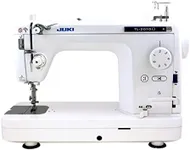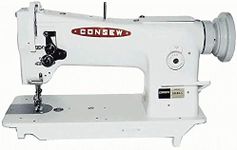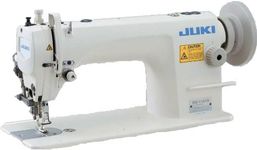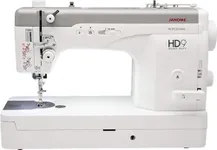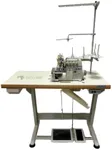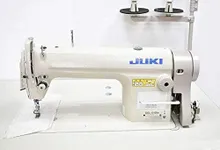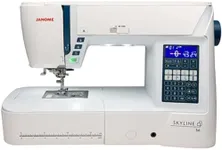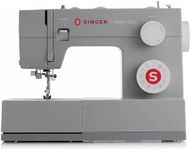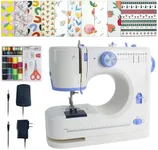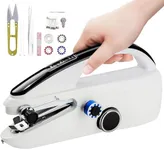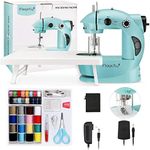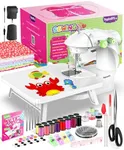Buying Guide for the Best Industrial Sewing Machines
Choosing the right industrial sewing machine can significantly impact the efficiency and quality of your sewing projects. Industrial sewing machines are designed for heavy-duty use and can handle a variety of materials and sewing tasks. To find the best fit for your needs, it's important to understand the key specifications and how they relate to your specific requirements. Here are some essential specs to consider when selecting an industrial sewing machine.Stitch TypeThe stitch type refers to the kind of stitch the machine can produce, such as straight stitch, zigzag stitch, or overlock stitch. This is important because different projects require different types of stitches. For example, a straight stitch is ideal for basic sewing, while an overlock stitch is used for finishing edges. If you primarily work on a specific type of project, choose a machine that specializes in the required stitch type. For versatility, consider a machine that offers multiple stitch types.
Speed (Stitches Per Minute)Speed, measured in stitches per minute (SPM), indicates how fast the machine can sew. This is crucial for productivity, especially in a commercial setting. Machines with higher SPM are suitable for large-scale production, while lower SPM machines are better for detailed or delicate work. If you need to complete projects quickly, opt for a machine with a higher SPM. For more intricate tasks, a moderate speed may be more appropriate.
Motor TypeThe motor type can be either clutch or servo. Clutch motors are powerful and suitable for heavy-duty tasks but can be noisy and less energy-efficient. Servo motors are quieter, more energy-efficient, and offer better speed control, making them ideal for precision work. Choose a clutch motor if you need maximum power for tough materials. If you prioritize energy efficiency and noise reduction, a servo motor is a better choice.
Needle Size and TypeNeedle size and type determine the machine's ability to handle different fabrics and threads. Larger needles are used for thicker materials, while smaller needles are for finer fabrics. The needle type can also vary, such as ballpoint needles for knits or sharp needles for woven fabrics. Select a machine that supports the needle sizes and types you frequently use. This ensures you can work with a variety of materials without damaging them.
Throat SpaceThroat space is the distance between the needle and the machine's body. A larger throat space allows for easier handling of large or bulky projects, such as quilts or upholstery. If you often work on large items, a machine with a generous throat space will provide more comfort and flexibility. For smaller projects, a standard throat space may suffice.
Automatic FeaturesAutomatic features, such as thread cutting, needle positioning, and backstitching, can enhance efficiency and ease of use. These features reduce manual intervention, saving time and effort. If you value convenience and want to streamline your workflow, look for machines with these automatic functions. However, if you prefer more control over your sewing process, a machine with fewer automatic features might be preferable.
Durability and Build QualityDurability and build quality are critical for industrial sewing machines, as they are subjected to continuous use. Machines made from high-quality materials and with robust construction will last longer and perform better. Check for features like metal frames and high-quality components. If you need a machine for heavy-duty, long-term use, prioritize durability and build quality to ensure reliability and longevity.

